|
Overview
Debt A recent report by the Texas Bond Review Board notes that Texas’ total outstanding local government debt is $280 billion, resulting in debt per capita of $8,869. This puts Texas’ local debt per capita in third place of the largest 10 states, behind only New York ($10,788) and California ($9,621), and nearly twice as high as in Florida ($4,753) (Figure 1). The following figures show the Texas Comptroller’s data for nominal and real (inflation-adjusted) outstanding general obligation (GO) debt for four of the largest cities in Texas (Austin, Dallas, Houston, and San Antonio). Each of them shows increased GO debt per capita from 2011 to 2020 in nominal and real amounts. But these amounts per capita show some differences.
The unsustainable deficit accumulation across many of Texas’ local governments reflects irresponsible spending. Economist Michael Munger called this “Deficits Are Future Taxes” (DAFT), meaning, increased debt signals a current spending issue and a future taxation problem for the next generations. This is a significant challenge for the state’s future and drives up property taxes higher than otherwise. Spending My analysis in June 2022 found that Texas’ four major cities have exceeded a responsible city budget for years, contributing to higher taxes and debt. This responsible budget sets a maximum threshold based on the average taxpayer’s ability to pay for it, which is best represented by a fiscal rule of a spending limit with the rate of population growth plus inflation. Of course, this growth is a maximum as the budget really should be frozen or even cut for most governments given their spending excesses over time. Truth in Accounting defines the local taxpayer burden as “the approximate dollar amount that would be required of each taxpayer in order to pay off all of a government’s liabilities today. It is calculated by dividing the ‘money needed to pay bills’ by the estimated number of taxpayers in the state or city,” demonstrating the depth of debt.
When local governments want to spend more given their balanced budget requirements, they must raise taxes, and they primarily raise property taxes. Tax Revenue The Texas Comptroller reports that property taxes are the biggest revenue source for local governments. Here are the current total property tax rates for these large cities:
According to the Tax Foundation, Texas currently has the sixth-highest property tax burden on those with a home in the country (Figure 10) Although the Lone Star State has no income tax, its substantial property tax burden increases because of excessive local government spending increases in recent decades has burdened renters and holders of a home, reducing the state’s affordability. The Tax Foundation’s state business tax climate ranks Texas 38th out of 50 for the burden of property taxes. The Texas Legislature recently passed and Governor Greg Abbott signed Senate Bill 2 with $12.7 billion in property tax relief. This package includes reducing the school district maintenance and operations (M&O) property taxes by 10.7 cents per $100 valuation. It also includes raising the homestead exemption for school district property taxes by $60,000 to $100,000. However, this package should have been much larger, as there were $33 billion in surplus funds available and tens of billions of dollars more available, leaving plenty of taxpayer money to return. The property tax bills provided further complicate the tax system and will not result in as much relief as some are advertising. The best approach was to reduce school district M&O property tax rates with all the relief provided. This should have been at least $21 billion for a reduction of 25 cents per $100 valuation. This would have provided the largest property tax cut in Texas history (Figure 11) instead of the second largest because of the largest spending increase in the state’s history. Recommendations
For the state to stay competitive and improve the future for Texans, Texas should seek to reform the largest hindrances to its economic flourishing: government spending and property taxes.
Conclusion The ultimate burden of government is not how much it taxes, but how much it spends. This is true at the national, state, and local levels. Texas boasts many metrics of economic freedom, including no personal income taxes, less burdensome regulations, and relatively less government spending. Recent increases in these areas hinder opportunities to prosper. Immediate policy changes to state and local budgeting that will eliminate property taxes, increase transparency for budgets, debts, and taxes, and strengthen their fiscal situation will help Texas better support prosperity for Texans today and for generations to come. Moreover, this will finally give Texans their God-given right to own property instead of renting from the government forever. Stop renting, start owning! Originally published with links to all sources at Texans for Fiscal Responsibility.
0 Comments
We discuss: 1) What findings compelled him to switch his economic beliefs from being a communist to a free-market capitalist; 2) Observations from his experience living and working in Taiwan, including the power of free markets and what the U.S. could learn from them; and 3) What it will take for Americans to wake up to the horrors of government overreach, ways the government currently violates the Constitution, and much more. Peter’s bio:
You can watch this episode and others along with my Let People Prosper Show on YouTube or listen to it on Apple Podcast, Spotify, Google Podcast, or Anchor. Please share, subscribe, like, and leave a 5-star rating! For show notes, thoughtful insights, media interviews, speeches, blog posts, research, and more, please check out my website (www.vanceginn.com and subscribe to my newsletter (www.vanceginn.substack.com), share this post, and leave a comment. When was the last time you purchased something online?
If you’re like many people, you’ve probably bought something online this week. And more than likely it was from Amazon though many other companies provide online shopping. In fact, a recent survey found that one out of every four Americans buy items from Amazon at least once per week. If the Biden administration has its way, Amazon could fall victim to trust-busting by the antitrust radicals as the Federal Trade Commission (FTC) gears up to file a lawsuit that could break up the company. This would put a major damper on the satisfaction that so many people have with purchasing from Amazon. But there’s more to this perplexing story. Despite recently trying—yet failing—to stop Microsoft from acquiring Activision, the FTC’s Chair Lina Khan and Assistant Attorney General Jonathan Kanter of the Department of Justice’s antitrust division are doubling down on the administration’s aggressive approach to antitrust enforcement. Americans are rightfully concerned about these radical moves. In my recent co-authored paper, we note how antitrust laws were designed to protect consumers and promote fair competition but rarely achieve these goals due to over-politicization and centralized power. Inevitably, businesses become the antitrust enforcement targets, resulting in less economic growth, innovation, and job creation, leading to higher prices and hindered prosperity. In short, consumers and employers are hurt by antitrust overreach. Bureaucrats too often use antitrust laws to bully businesses in the name of political agendas or vote-seeking initiatives, including empowering labor over management or breaking up successful companies based solely on their large size. This includes recent attempts to discourage “big tech” in the case of the trial against Microsoft. The erratic and changing nature of antitrust laws as power and agendas change leaves employers and innovators uncertain about the future thereby limiting their ability to plan profitable endeavors. For example, determining what constitutes a "restraint of trade" under Section 1 of the Sherman Act, the first-ever antitrust statute, can be challenging. An overly broad interpretation of this phrase can lead to many unintended consequences. Following complications in the Sherman Act, the U.S. Supreme Court recognized the consumer welfare standard that has set the precedent for at least the last 50 years, focusing on a simple question: do economic actions make consumers better or worse off? Protecting consumer welfare, which refers to the value consumers receive above the price they pay for goods and services, should be the driving force behind antitrust enforcement. This concept acknowledges that consumers have the sovereignty to make decisions that support the competitive market process. This has been the standard until recently. A much more activist group of antitrust scholars and practitioners have emerged as advocates for a radical transformation of antitrust enforcement. They largely reject the consumer welfare standard and make sweeping claims that failing to enforce antitrust laws has led to market concentration and wealth disparities, or even the flawed claim of “greed inflation.” But antitrust radicals diverge from the focus on promoting consumer welfare and safeguarding competition. Their main argument is that the consumer welfare standard has allowed concentration and enabled firms to limit output and charge higher prices. Moreover, they advocate that antitrust laws should protect various stakeholder groups, not just consumers, making the consumer welfare standard inadequate. However, evidence suggests the opposite. According to a study conducted by former FTC Commissioner Joshua Wright, there is no empirical basis to conclude that monopoly power is increasing. Other studies indicate that while markups may be rising, output has increased, and quality-adjusted prices have remained stable. The radical approach by Khan and Kanter to antitrust enforcement will not help consumers or the economy, no matter their intentions. We should remember the wise words by Milton Friedman: “One of the great mistakes is to judge policies and programs by their intentions rather than their results.” The key to achieving greater opportunity and prosperity lies in reducing government interference and allowing competition, such as the gains provided by Amazon and Microsoft, to drive better results rather than expanding government. In fact, someone should be addressing the monopolies created by government across the economy, which have questionable at best increases in consumer welfare. If the Biden administration’s proposed new guidelines for mergers go through or other expansions of antitrust enforcement, expect the already strained economy to endure extended suffering as innovation is stifled and consumers bear the brunt. And the satisfaction you get from shopping online may soon not be an option. Originally published at Townall. This Week's Economy Ep. 23 | Less Job Growth, But More GDP Growth? GOP Debate Thoughts & Recession8/25/2023 Today, I cover: 1) National: Declining stock market, depreciating dollar, the Jackson Hole conference, Fed's balance sheet, revised lower job growth, questionable strong GDP growth, and why I believe we've been in a recession; 2) Louisiana: The Pelican State's latest job-market report, why employment is down, and what Louisiana can do to make a strong comeback; and 3) Other: My thoughts on the most recent GOP debate, my hopes for future debates, and more. You can watch this episode and others along with my Let People Prosper Show on YouTube or listen to it on Apple Podcast, Spotify, Google Podcast, or Anchor. Please share, subscribe, like, and leave a 5-star rating!
For show notes, thoughtful insights, media interviews, speeches, blog posts, research, and more, please check out my website (www.vanceginn.com) and subscribe to my newsletter (www.vanceginn.substack.com), share this post, and leave a comment. Texas is a leader in job creation over the last year and since February 2020. But Texas faces major headwinds as the recently ended 88th Legislature looked more like California than what is expected from the free-market bastion of hope and prosperity in Texas.
The best path to let people prosper is free-market capitalism as it is the best economic institution that supports jobs and entrepreneurship for more people to earn a living, gain skills, and build social capital. Table 1 shows Texas’ labor market for July 2023 from the U.S. Bureau of Labor Statistics. The labor market continues to improve in Texas even as there are some weaknesses remaining.
The economy continues to expand in Texas though there are headwinds.
Strengthening the Texas Model will help Texans better resist D.C.’s overreach and flourish more for generations to come. Let People Prosper BONUS Episode w This Week in Bitcoin | Will Crypto Be the Next U.S. Currency?8/23/2023 In this episode, we discuss: 1) Why the U.S. dollar is weakening, and whether cryptocurrency has the potential to replace the dollar as the currency; 2) How antitrust laws harm competition and threaten sectors like tech; and 3) What the election in Argentina could mean for its economy, and more! Be sure to check out and subscribe to the "This Week in Bitcoin" podcast.
You can watch this episode and others along with my Let People Prosper Show on YouTube or listen to it on Apple Podcast, Spotify, Google Podcast, or Anchor. Please share, subscribe, like, and leave a 5-star rating! For show notes, thoughtful insights, media interviews, speeches, blog posts, research, and more, check out my website (https://www.vanceginn.com/) and please subscribe to my newsletter (www.vanceginn.substack.com), share this post, and leave a comment. In this episode, we discuss: 1) The importance of economic freedom, how it is measured, the rule of law, and the importance of protecting private property; 2) Myths about which European countries are socialist and the history of different economic institutions in Poland, including his latest work “The Road to Socialism and Back: An Economic History of Poland, 1939–2019”; and 3) A history of socialism and communism, what Marx failed to see in countries with capitalism or socialism, and reasons to be optimistic about economic freedom and prosperity worldwide. Matt’s bio:
For show notes, thoughtful insights, media interviews, speeches, blog posts, research, and more, check out my website (https://www.vanceginn.com/) and please subscribe to my newsletter (www.vanceginn.substack.com), share this post, and leave a comment. Louisiana has many fantastic resources with educated people, eccentric culture, robust ports, abundant oil and gas production, and much more yet poor public policies stifle this potential, highlighted by job losses in July 2023. The Pelican Institute’s “Comeback Agenda” shows the path forward to let people prosper. Table 1 provides Louisiana’s key labor market information over time, including the latest data for July 2023 that was recently released by the U.S. Bureau of Labor Statistics. These data indicate some strength on the surface, but we must look deeper to see how Louisianans are really doing in this economy. Louisiana’s unemployment rate is lower but for the wrong reasons as people continue to leave the labor force.
Overview of the labor market in industries in Louisiana.
Compared with neighboring states based on several measures there continue to be major concerns with the labor market and other areas in Louisiana. Another one of those is economic growth. Table 2 shows how the U.S. and Louisiana economies performed since 2020, as reported by the U.S. Bureau of Economic Analysis.
Today, I cover the following in less than 15 minutes: 1) National: What the new decade-high interest rate signifies for homeowners and renters, promising GDP growth, and the left wants more spending on top of some of this "new political subsidy economy" while some on the Left admit Bidenomics has failed, 2) States: Job growth and unemployment rates across states from the latest U.S. Jobs Report, including which states have the lowest and highest unemployment and year-over-year changes; and 3) Other: Why China's yuan is weakening but their interest rates out-compete the U.S.', and reasons for optimism for quality of living as shown in a recent article. Below are links to my recent interviews and publications:
For show notes, thoughtful insights, media interviews, speeches, blog posts, research, and more, check out my website (https://www.vanceginn.com/) and please subscribe to my newsletter (www.vanceginn.substack.com), share this post, and leave a comment. Fitch Ratings downgraded the US credit rating from AAA to AA+ because they expect fiscal deterioration over the next few years. While the diagnosis seems delayed, they’re right. Irresponsible bipartisan spending for decades is the culprit. With the national debt approaching $33 trillion, the American economy appears unlikely to recover its AAA status any time soon.
Republicans and Democrats have consistently increased spending more than tax revenues, leading to massive debt and unsustainable deficits. Increased spending under President Biden made a dire situation even worse. For instance, in just five weeks since suspending the debt ceiling, the deficit rose by $1 trillion. Inflation soared once the current administration took office, and still hasn’t leveled off. Real wages are just now catching up with inflation after falling behind for more than two consecutive years. The US dollar’s value has waned. America is not a safe investment, thus the downgrade. Fitch Ratings predicts slower economic growth in the coming years due to high regulations, increased taxes, and demographic changes affecting productivity and population. This slower growth means less tax revenue for the federal government. Also, mandatory spending on Social Security and Medicare, which make up the bulk of federal spending, is projected to grow rapidly, contributing to rising deficits that will soon have just net interest payments exceed spending on national defense. Americans can expect their wallets to be tangibly affected soon. The downgrade will contribute to even higher interest rates than otherwise, which will have a domino effect on various aspects of the economy, including the stock market. Unless severe corrective measures are taken, the situation will likely deteriorate further, impacting people’s prosperity and perpetuating a debt and stagflationary situation. The government should focus on fiscal responsibility and better budget management to avoid a deepening spending crisis, exacerbating Americans’ existing economic burden. First, an approach of zero-based, performance-based budgeting should be implemented throughout the government to identify and eliminate ineffective programs. Second, independent audits by private entities of government spending for programs would provide transparency and guide decision-making regarding which programs to retain, modify, or cut. Third, but likely most important, implementing a fiscal rule that has worked at the state level, such as population growth plus inflation for a maximum budget growth rate, could cap the government’s debt accumulation and support more economic growth. Had such a rule been adopted over the last two decades, the national debt increase would have been significantly lower, by just $500 billion instead of the actual $19 trillion, allowing for better debt management. The US credit downgrade should be a sobering wake-up call that urges Congress and the administration to prioritize fiscal responsibility. As the nation faces economic challenges and increasing debt burdens, it is crucial to adopt prudent measures to put America back on a path to prosperity. Only through concerted efforts to control spending, implement effective budgeting practices, and consider the long-term economic impact of policy decisions can America chart a sustainable and prosperous course for the future. Otherwise, buckle up. It’s going to be a bumpy ride. Originally published at AIER. It’s an exciting time as millions of students return to schools in Texas this month. The bright young minds are ready to take the next step in their unique paths for a prosperous future.
But what’s depressing is that few students in Texas will attend the best school for them. This is because Texas – the largest red state – has yet to adopt universal school choice. Why the delay? Mostly misinformation. School choice is “any policy that allows families to take their children’s education dollars to the approved education provider of their choosing – be it traditional public schools, public charter schools, private schools, virtual learning, or homeschooling.” The gold standard of school choice is Education Savings Accounts (ESAs). Universal or near-universal ESAs have been adopted by eight states so far: Arkansas, Arizona, Florida, Indiana, Montana, South Carolina, Utah, and West Virginia. Other states have passed limited school choice. With ESAs, all parents receive an allotted amount for each child that they can use however they wish for approved education-related expenditures. Some parents choose to send their child to their local public school district and use the money for school supplies. Others put it toward private school tuition, and others toward homeschool curriculum and tutoring. The possibilities of using ESAs are extensive to best meet the unique needs of students. But Texas trails behind in school choice because voters living in rural areas fear “that any kind of educational competition will decimate rural public schools and drain them of funds.” This circular concern proves the point that school choice advocates have been making for years: if a school, be it public, private, or charter, fails due to the existence of ESAs, then that school lacks the competition required to keep and attract parents. And herein lies misinformation. A recent article from the Dallas Morning News on this subject claimed, “Did you know parents can take their children to any school they desire? If a parent wants their child to attend a charter, private or public school, the parent has the power to choose.” If only that were true. But when the average private school tuition in Texas is over $10,000, and the charter school waitlist is over 70,000, asserting that “parents can take their kids to any school they desire” misunderstands how unattainable alternative schooling options are for many children, especially those in lower-income or single-parent households. I grew up in a lower-income, single mother household in South Houston, Texas, so this limitation hits home. Fortunately, I had the opportunity to go to a small private school from kindergarten to second grade because my mother worked there. I attended a government school from third grade to sixth grade. Then my grandparents and father helped my mother fund my home schooling from seventh grade to twelfth grade. I then went on to be a first generation graduate with a doctorate in economics from Texas Tech University. Unfortunately, too many don’t have those same opportunities that I was blessed to have. This must change. While ESAs do not remove every barrier, as schools have limited seats and some areas may only have government schools. But they substantially widen the array of options by helping alleviate some of the financial burden by putting tax dollars where they belong: funding students instead of systems. The states that have adopted universal school choice with ESAs are allowing a more competitive market to work in education, and it will be exciting to see how competition fuels improvements in educational outcomes. Not only are parents in these states more equipped to send their children to the best schooling options for them, but teachers are also empowered with more options for where to take their professional services that best meet their needs. Are government schools the best option in Texas? Implement universal school choice, and the answer will become apparent. Otherwise, the Lone Star State will lag behind more forward-thinking states that value educational freedom and student achievement. There is a high likelihood that school choice will be part of a called special session by Texas Gov. Greg Abbott (R) in October. Let’s hope so because the longer Texas waits, the further students will fall behind. Originally published at The Center Square. In this episode, we discuss: 1) How Arkansas continues to grapple with the same issues decade after decade, including a broken foster care system, high poverty rates, and poor K-12 reading scores; 2) Why safety net reforms are key to Arkansas' flourishing, specifically concerning Medicaid; and 3) How more school choice would put Arkansas on the map, and why Arkansas has the potential to be the next go-to state like Texas, Florida, and Tennessee. Nic’s bio:
For show notes, thoughtful insights, media interviews, speeches, blog posts, research, and more, check out my website (https://www.vanceginn.com/) and please subscribe to my newsletter (www.vanceginn.substack.com), share this post, and leave a comment. A recent report from the Tax Justice Network (TJN) boldly asserts that “countries will lose $4.7 trillion over the next 10 years…[and] countries around the world collectively spent $4.66 trillion on public health in a single year” due to tax havens. In light of this seemingly shocking discovery, many groups are now campaigning for global tax reform so that nations will avoid “losing out” on tax revenue.
The new idea of the “UN tax convention and to create a global tax body under UN auspices” would do the opposite of creating better economic outcomes. According to the report, which compiles data from 47 countries, multinational corporations legally avoid paying the highest taxes, mainly by moving to so-called “tax havens.” Tax havens include jurisdictions offering low corporate tax rates, alluring multinational corporations and affluent individuals to seek tax relief by conducting their financial activities there. A key player in this process is profit shifting, where companies redirect their profits to low-tax jurisdictions, despite earning most of their revenue in high-tax regions. Small countries like the Cayman Islands, with their corporate tax rate of only 6%, are one of these havens, but there are also more prominent countries like Switzerland and Hong Kong that are favorable homes for large corporations, both having rates under 20%. It’s perfectly legal for a company to move its headquarters and finances to other countries, but these tax havens can pose a threat when many governments depend on taxes to finance government spending. Rather than risk losing these resources, countries are clamoring for centralized taxation with higher tax rates to level the playing field. But there’s a better way. While these countries are pointing to tax havens to try and place blame for lost tax revenues, there are three fingers pointing back at them. Instead of centralizing a global tax and empowering politicians and bureaucrats, countries with high corporate taxes, like the U.S., with a corporate tax rate of 21%, should consider domestic tax reforms that prioritize lowering corporate taxes and limiting government spending. Reduced corporate tax rates, like those in the 2017 Trump tax cuts, can enhance a country’s competitiveness and appeal to businesses instead of driving them to move their money to tax havens. This was the result of those tax cuts as many businesses started moving back to the U.S. or started repatriating their money here. Simultaneously, keeping government spending in check with responsible budgeting prevents escalating the government’s overall burden, reducing the “need” for higher taxes. While corporate taxes typically pass along the burden to consumers through higher prices, fewer jobs, and lower wages, consumption-based taxes such as final sales and use taxes (not value-added taxes) are less burdensome and more equitable. And these taxes better match economic fluctuations and taxpayers’ ability to pay for spending, which is why more countries (and states) should be moving to them. Fewer burdensome taxes support more economic growth, resulting in more tax revenue, which many politicians desire. By supporting growth instead of raising taxes and hoping that converts to growth (it won’t), spending can be better balanced, reducing deficits, which is just future taxes. While the Tax Justice Network’s findings are interesting, they hardly point to the need for global tax reforms because these tax havens are legal ways to avoid paying higher taxes. Instead, the U.S. and elsewhere should reform their tax system if they hope to foster competition and provide more paths for human flourishing. Originally published at Econlib. This Week's Economy Ep. 21 | Happy Birthday, Milton Friedman: Economic Wisdom That Still Applies Now8/11/2023 Today, I'm honoring what would have been the 111th birthday of Nobel prize winner and economist Milton Friedman. His economic wisdom has profoundly impacted my philosophy. By discussing some of his most famous quotes, I divulge how so much of Friedman's findings and theories still apply today, and how we could have a better economy with more human flourishing by incorporating more of his research and views. Two of my favorite books of his I recommend: You can watch this episode and others along with my Let People Prosper Show on YouTube or listen to it on Apple Podcast, Spotify, Google Podcast, or Anchor. Please share, subscribe, like, and leave a 5-star rating!
For show notes, thoughtful insights, media interviews, speeches, blog posts, research, and more, check out my website (https://www.vanceginn.com/) and please subscribe to my newsletter (www.vanceginn.substack.com), share this post, and leave a comment. In this episode, we discuss: 1) The flawed green energy agenda, how it centralizes power, enables China, and stifles free markets (watch the hearing before the U.S. House Ways and Means Committee where we both testified on how destructive is the green energy agenda); 2) Why wind and solar can never replace fossil fuels and the harmful effects of trying to eradicate all fossil fuel usage; and 3) How "Bidenomics" is empowering foreign nations while putting the U.S. at a disadvantage, and more. Daniel’s bio:
For show notes, thoughtful insights, media interviews, speeches, blog posts, research, and more, check out my website (https://www.vanceginn.com/) and please subscribe to my newsletter (www.vanceginn.substack.com), share this post, and leave a comment. Texas Governor Greg Abbott (R) recently signed into law the tax relief compromise by the Legislature’s second special session. This relief is historic with the country’s largest tax cut and the largest net tax cut in Texas history.
But it falls short of what Texans were promised of the largest property tax cut in the state’s history, as it’s instead the state’s second largest property tax cut because of the largest spending increase in Texas history. Rather than providing substantial relief and simplifying the property tax system, the package presents a burdensome approach that could hinder the state's progress. By overspending and adopting a convoluted tax relief strategy, Texas risks falling behind states rather than leading the way in addressing real property tax concerns. The deal provides $12.7 billion in new property tax relief out of the nearly $33 billion surplus as the Legislature increased the upcoming 2024-25 biennial budget by more than 30% in state funds. This is the largest increase in Texas history and well above the the key rate of population growth plus inflation of 16% over the last two years. The major target for property tax relief was reducing school district maintenance and operations (M&O) property taxes. These property taxes are essentially a statewide property tax, which is prohibited by the state’s constitution, as they are partially determined by the state’s school finance system that includes redistribution of property taxes from school districts with high-valued property to districts with lower-valued property. Of the nearly $33 billion in state surplus funds and tens of billions more in new revenue available, the state allocated just $7.1 billion for a modest 10.7-cent reduction per $100 valuation in those property tax rates, called “compression,” which provides long-lasting relief and benefits everyone. The other $5.6 billion is for raising the homestead exemption by $60,000 to $100,000 for the appraised value of primary residences to determine how much is paid for school district property taxes. But this will be short-lived as valuations rise quickly and has failed to provide long-lasting relief the last three times it’s been tried in Texas since 1997 while benefitting only only homeowners. The $12.7 billion over the next two years will hardly alleviate the burden of property taxes on Texans and is a far cry from eliminating them altogether as Gov. Abbot initially set out to do. The package also includes a pilot project of an appraisal cap on non-homestead property at 20% per year for three years. This property doesn’t have a cap on it today so this will benefit some but will mean that local governments will just ratchet up property tax rates to bring in the tax revenue they desire to grow spending. There will also now be three elected officials added to county appraisal boards. Texans are left with this compromise package that unnecessarily complicates the tax system and obstructs efforts to eliminate school M&O property taxes, enabling the government to pick winners and losers. In this case, renters would undoubtedly be among the losers, and they are nearly 40% of households across the state. A more robust approach is necessary soon to achieve significant, long-lasting property tax relief for Texans. The best path being discussed is to buy down school district M&O property tax rates with surplus funds starting with limiting government spending, which was lacking this session after years of an improving budget picture. Ways to improve this overall package would have been by institutionalizing the buy-down plan and imposing spending limits on local governments. The final part of the package is $600 million to raise the exemption of gross receipts to pay franchise taxes from $1 million to $2.47 million, which is important but doesn’t help reduce property taxes and is less effective than cutting the franchise tax rates until they’re zero. This brings the total amount of new tax relief to $13.3 billion. This amount is lower than the $14.2 billion that the Legislature provided to buy down school property taxes in 2008-09, which would be about $21 billion to have the same purchasing power today. And even if you include the state maintaining its property tax rate reduction in 2019 of $5.3 billion in this year’s budget for a total of about $18.6 billion, it would not equal $21 billion. But that 2008-09 relief was done by raising bad taxes of the franchise tax, sales tax on motor vehicles, and cigarette tax which this time no taxes are raised as the taxpayer funds come from surplus money. So, this 2023 tax relief package can be called the “largest net tax cut in Texas history” but not the “largest property tax cut,” and is the largest tax cut in the country. But Texans could have had more relief if the state hadn’t spent so much. Eliminating school property taxes is a crucial next step for Texans to truly own their homes instead of renting from the government forever. And this will be achieved faster when politicians stop spending so much. So while this historic relief is much appreciated, there’s much more to do next session for Texans to stop renting and start owning. Originally published at Real Clear Policy. This Week's Economy Ep. 20 | Fitch Downgrades U.S. Credit Score, New Weaker Jobs Report & More8/4/2023 Today, I cover: 1) National: Findings from the latest (weaker) Jobs Report, household survey, average weekly earnings, and my thoughts on Fitch downgrading the U.S. credit score; 2) States: Why state and local tax revenues are down and what it means; and 3) Other: My recent interviews on Fox Business, NTD News, and KTRH Houston discussing the Fitch downgrade and how Bidenomics rewards the wealthy. Check out the latest Chart of the Century put out by AEI. You can watch this episode and others along with my Let People Prosper Show on YouTube or listen to it on Apple Podcast, Spotify, Google Podcast, or Anchor. Please share, subscribe, like, and leave a 5-star rating!
For show notes, thoughtful insights, media interviews, speeches, blog posts, research, and more, check out my website (https://www.vanceginn.com/) and please subscribe to my newsletter (www.vanceginn.substack.com), share this post, and leave a comment. |
Vance Ginn, Ph.D.
|

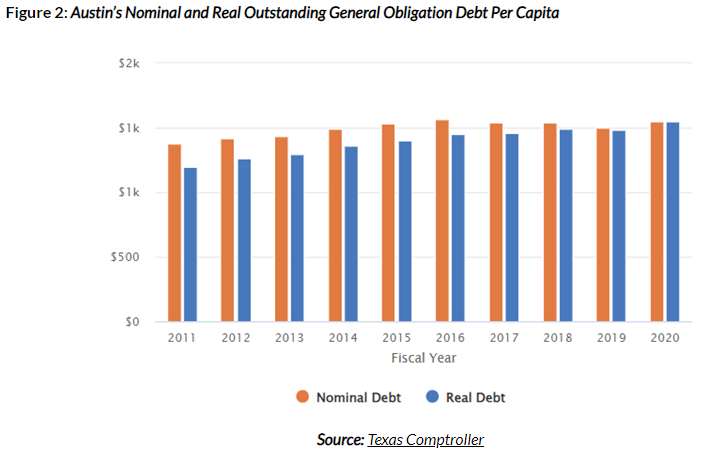
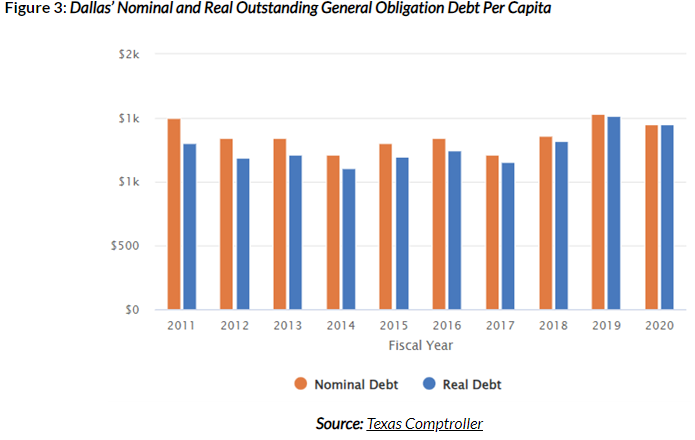
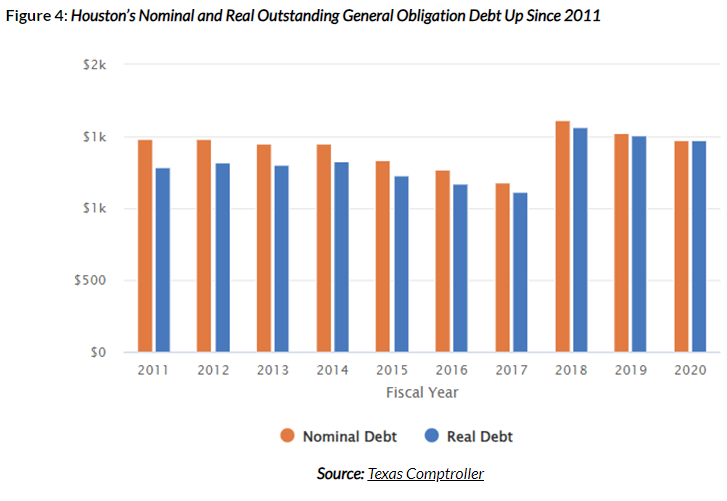
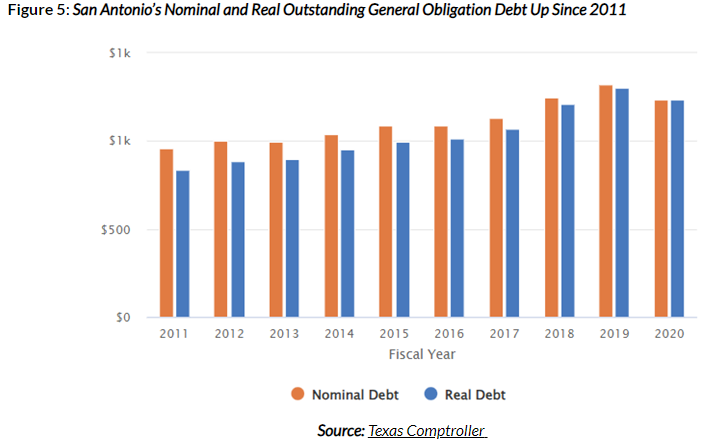
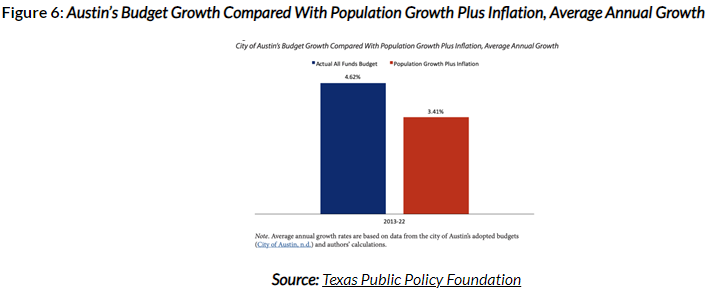
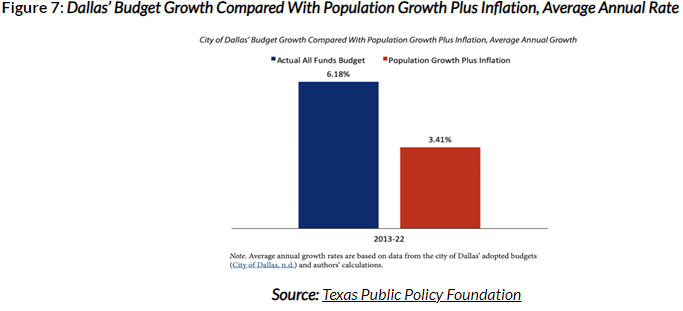
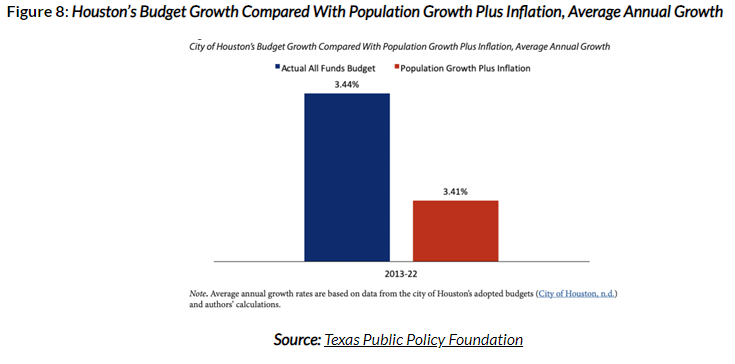
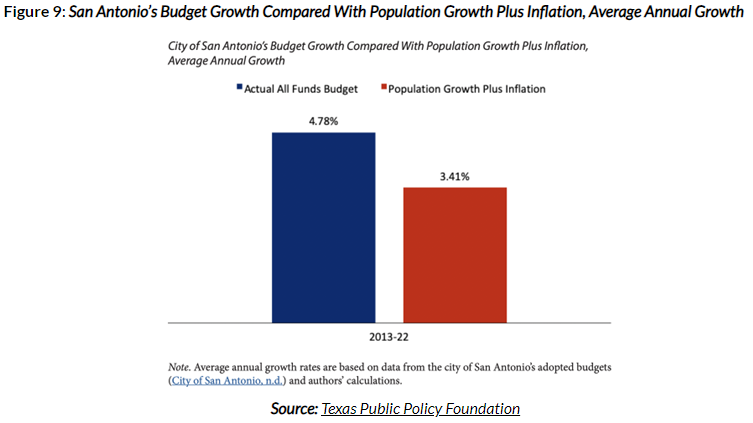
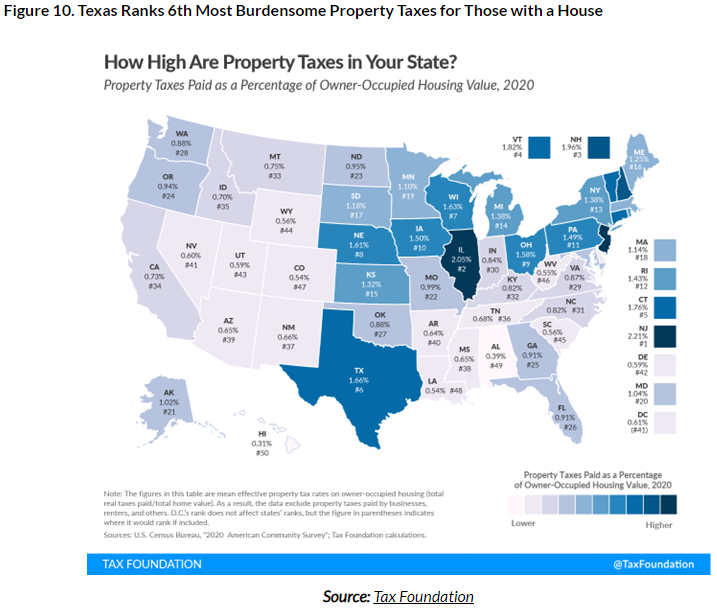
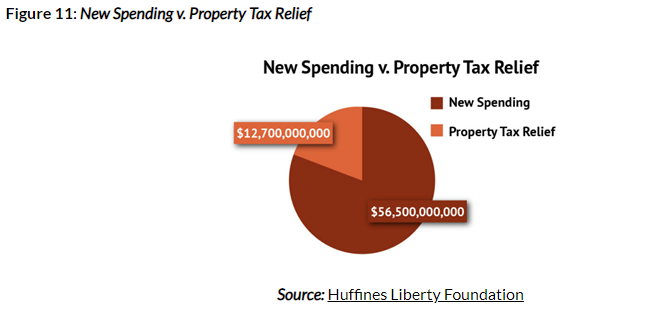

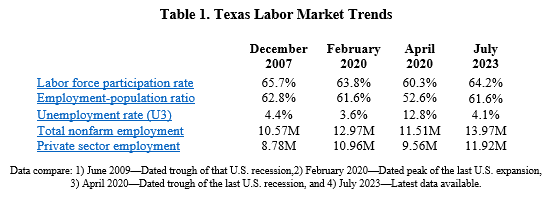

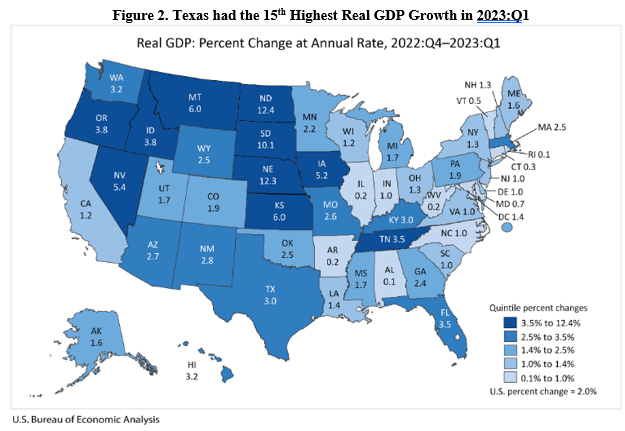
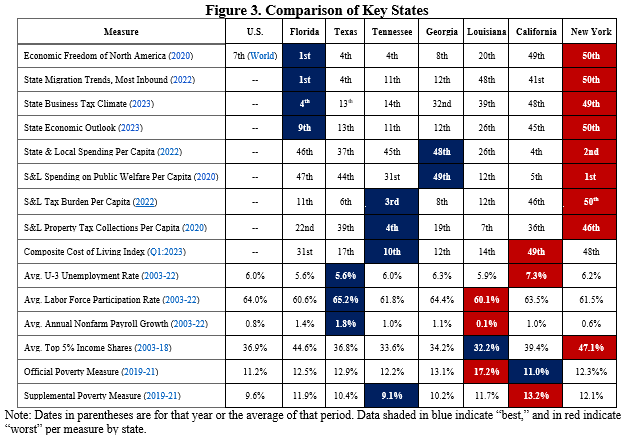

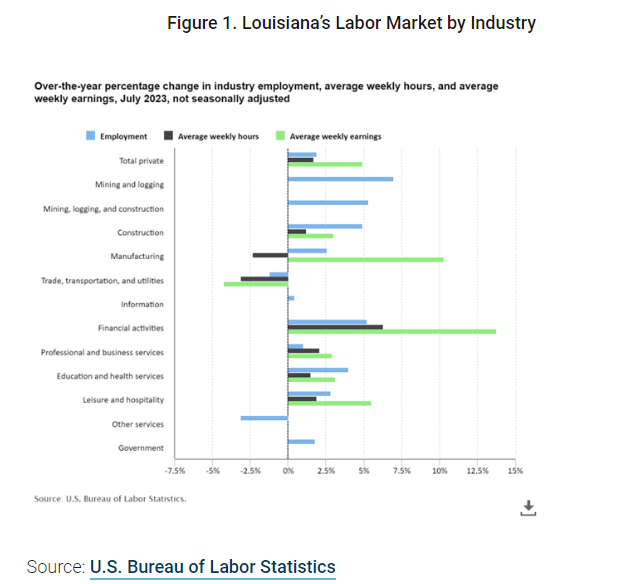





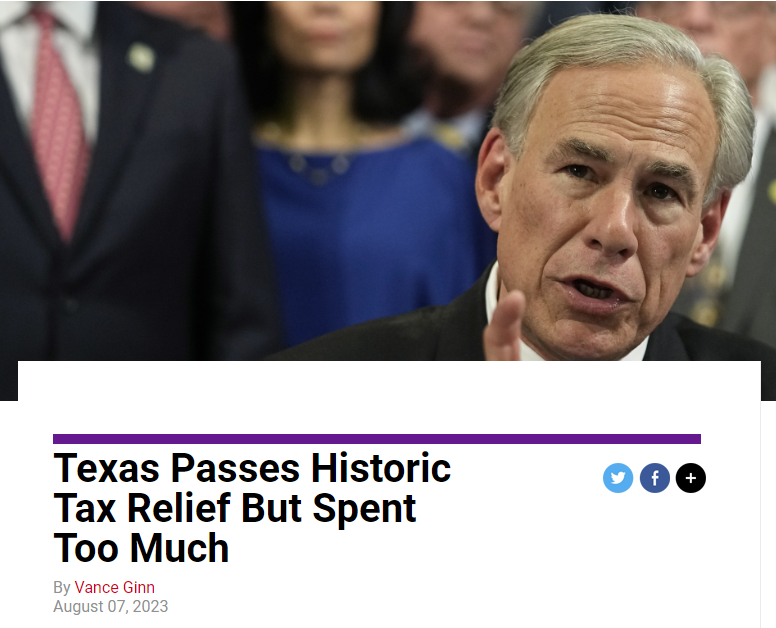
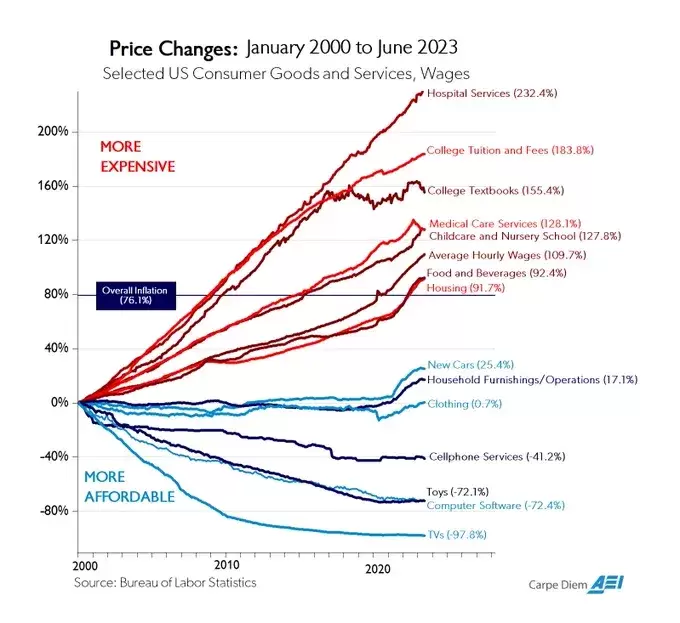

 RSS Feed
RSS Feed